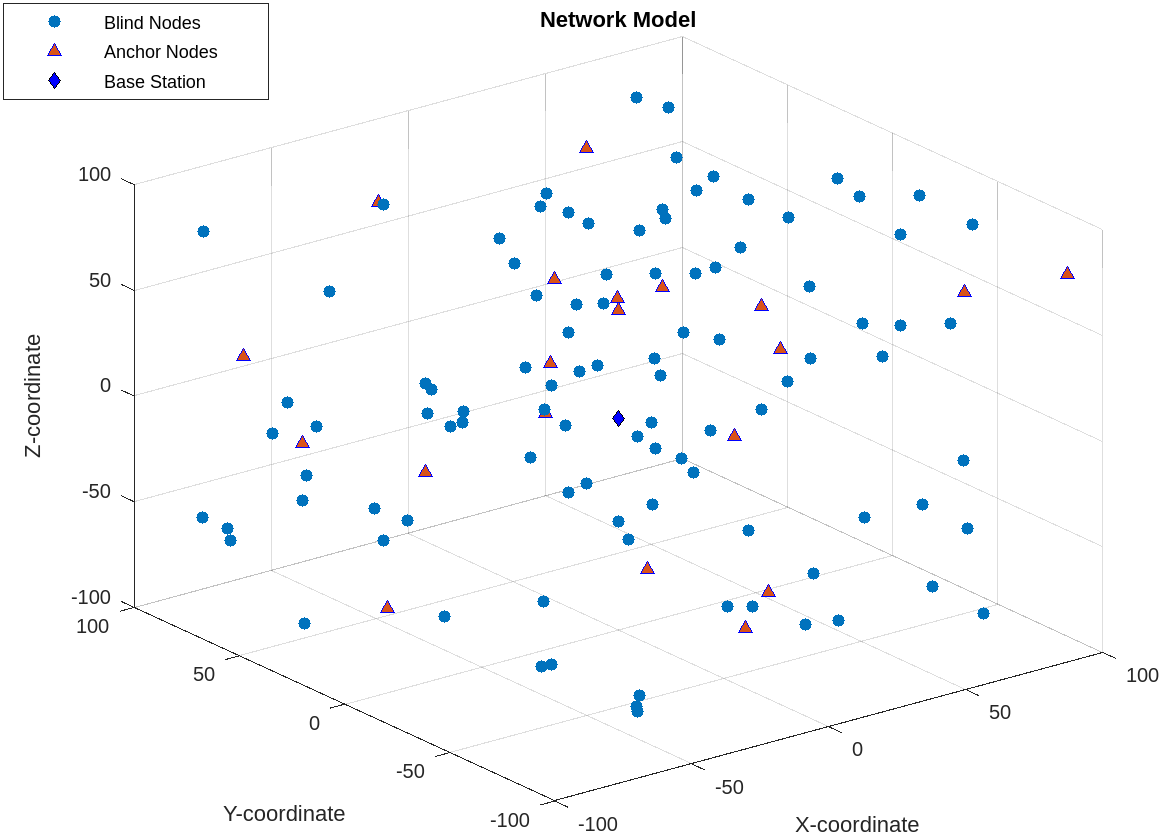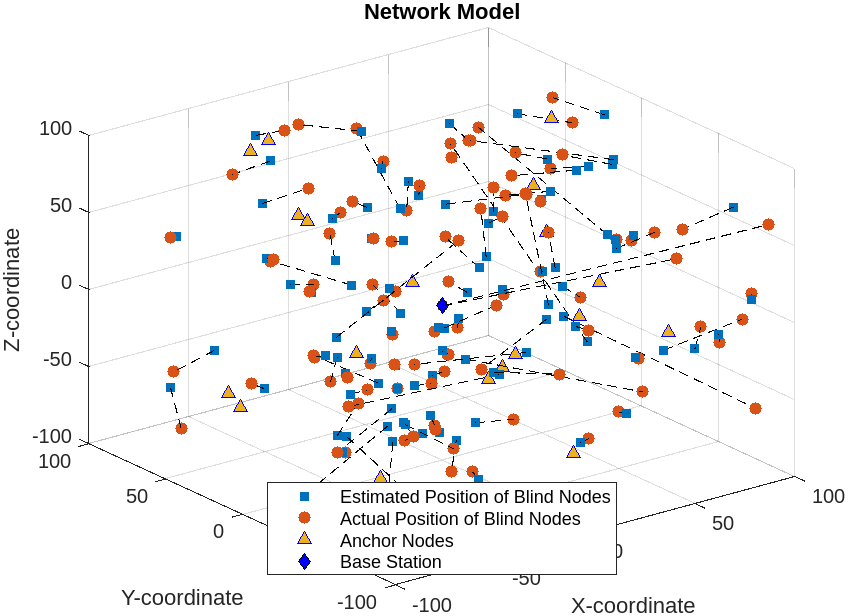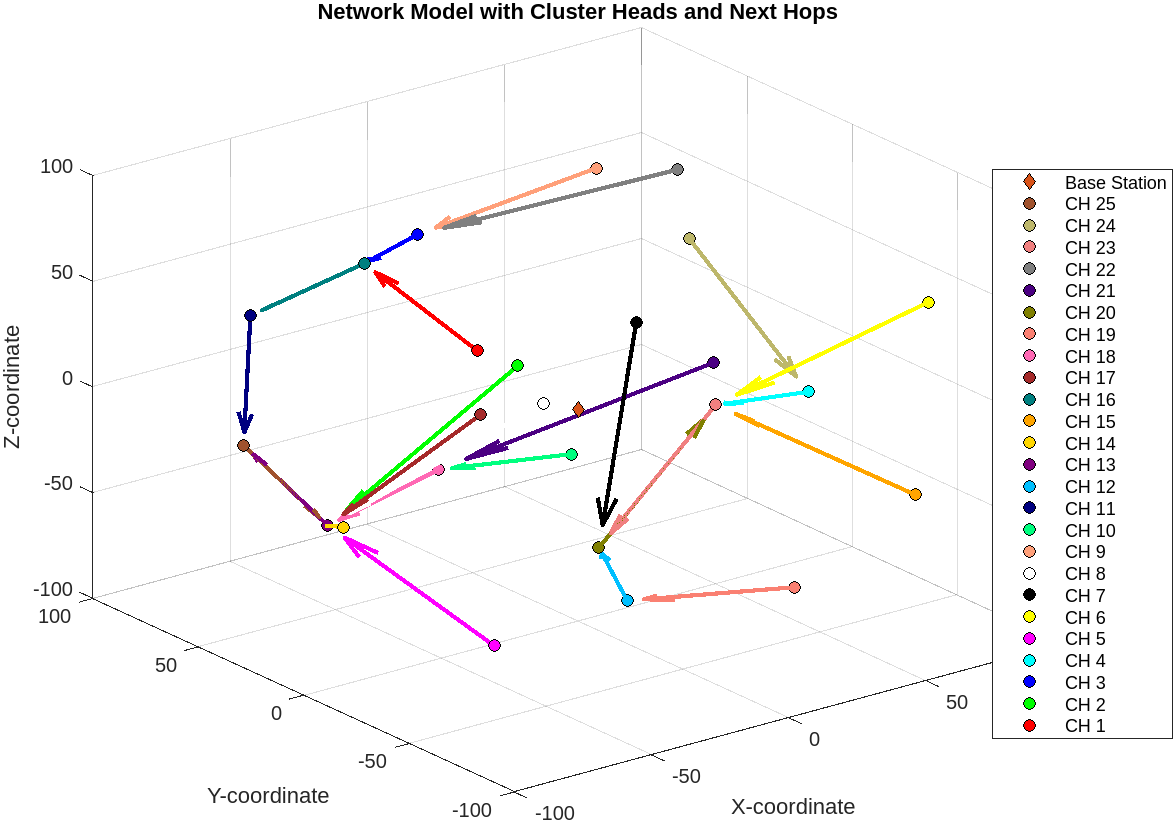EcoFly: Energy-Efficient FANET Protocol

Project Overview
EcoFly is a FANET (Flying Ad-hoc Network) protocol designed to optimize UAV (Unmanned Aerial Vehicle) communication in disaster scenarios. By utilizing Improved Particle Swarm Optimization (IPSO) algorithms, EcoFly enhances communication reliability and reduces energy consumption. This project was implemented from August 2023 to November 2023 and includes realistic UAV simulations validated through comprehensive testing.
Implementation Steps
Step 1: Defining the Energy Model
Assumptions:
- Anchor nodes and blind nodes.
- Energy of blind node, position, and velocity.
Description:
This step involves defining the energy model for the UAVs. Anchor nodes are assumed to have fixed positions, while blind nodes are mobile. The energy consumption for positioning and movement is considered.

Step 2: Position Determination using PSO
Challenge:
In a disaster scenario, the actual positions of blind nodes are unknown.
Solution:
Use anchor nodes to determine the positions of blind nodes using Particle Swarm Optimization (PSO).

Step 3: Clustering using K-Means
Description:
Once the positions of blind nodes are determined, clustering is performed using the K-Means algorithm to group the nodes efficiently.

Step 4: Cluster Head Selection using Improved PSO
Description:
Improved PSO is used to select the optimal cluster head within each cluster, ensuring efficient communication and energy usage.

Step 5: Maintenance of Cluster Head
Challenge:
The structure of clusters may change due to the movement of nodes.
Solution:
Maintenance involves restructuring clusters and reselecting cluster heads as needed.
Step 6: Determining the Next Hop
Description:
The final step is determining the next hop for data transmission using Improved PSO, ensuring reliable and energy-efficient routing.

Technologies Used
Algorithms: Improved Particle Swarm Optimization (IPSO)
Simulation Tool: Matlab
Version Control: GitHub
Project Repository
GitHub: pratapavinesh
License
Distributed under the MIT License. See LICENSE for more information.